说明:实际上EVD(特征分解)是SVD的一种特殊情况;逆是伪逆的特殊情况?,这在最小二乘当中有应用。
在“8点法”求解本质矩阵当中会有SVD分解,在3D到3D空间转换中,算法icp有SVD解法。SVD作为一种分解矩阵的方法,
有着广泛应用。
一、特征分解(手写word截图)


1 %% Matlab验证代码 2 a=[1 2 3;2 1 3;3 3 6] 3 [x,y]=eig(a) %% x矩阵每一列代表 lamda123 对应的特征向量 4 diag(y) %% y矩阵的对角元素是对应特征值lamda123
二、 SVD分解和图像压缩
数学概念;参考: https://www.cnblogs.com/xugenpeng/p/4839336.html?from=singlemessage&isappinstalled=0
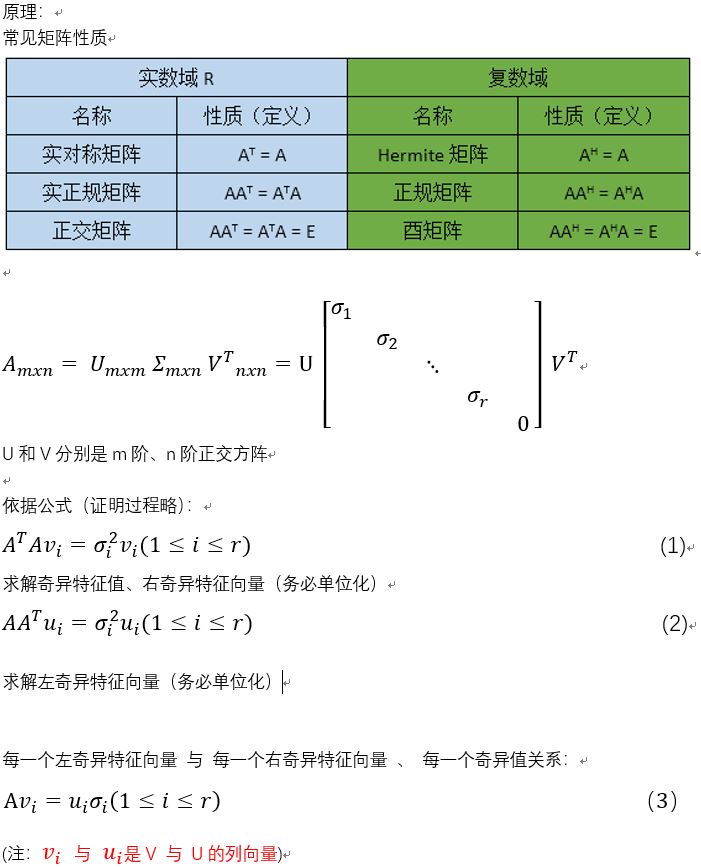

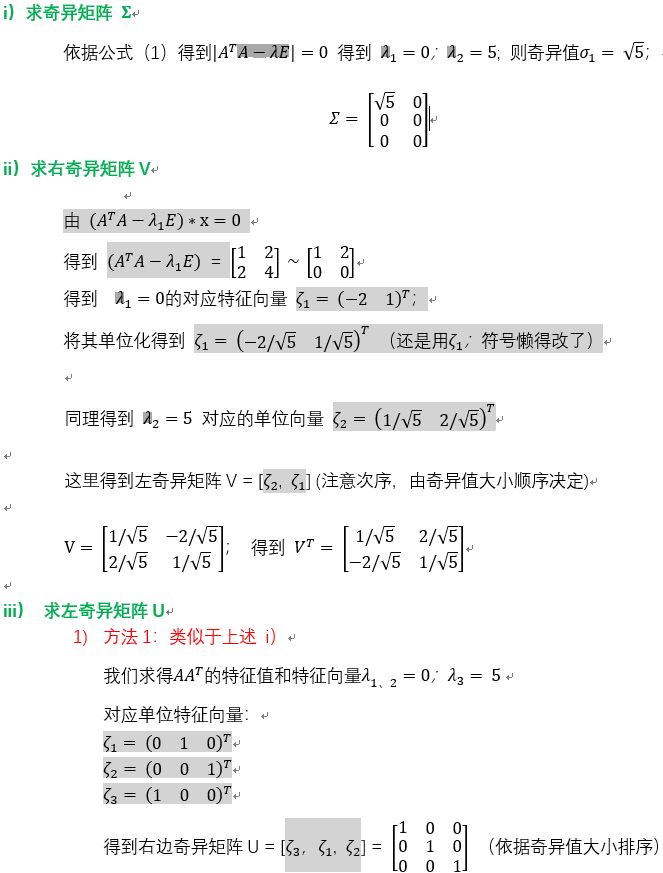
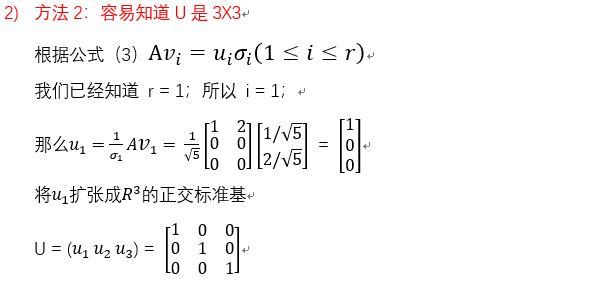
1 A = [1 2; 0 0; 0 0] 2 [U, S, V] = svd(A);
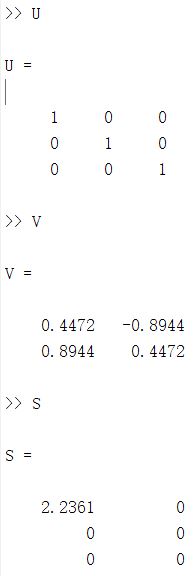
和手动计算结果一致。
图像压缩实例
1 #include<iostream> 2 using namespace std; 3 4 #include<opencv2/opencv.hpp> 5 using namespace cv; 6 7 void printMat(Mat& matrix) 8 { 9 for (int j = 0; j < matrix.rows; j++) 10 { 11 for (int i = 0; i < matrix.cols; i++) 12 { 13 cout << matrix.ptr<double>(j)[i] << ", "; 14 } 15 cout << endl; 16 } 17 cout << endl; 18 } 19 20 // input: image : ... 21 // radio : 压缩比率 22 // ouput: Mat : 压缩后的灰度图 23 Mat compressJPG(Mat image, double radio) 24 { 25 SVD svd_1st(image, SVD::MODIFY_A); 26 Mat W_ = Mat::zeros(svd_1st.w.rows, svd_1st.w.rows, CV_64F); 27 28 // 压缩比例:radio = m*n/(r*(m+n+1)) 29 // r = m*n / (radio*(m+n+1)) 30 double m = double(image.rows); 31 double n = double(image.cols); 32 double r = m * n/(radio*(m + n + 1)); 33 int r_ = int(r); 34 if (r_ >= svd_1st.w.rows) 35 { 36 cout << "errors in setting radio!" << endl; 37 return Mat(); 38 } 39 //for (int i = 0; i < svd_1st.w.rows; i++) 40 for (int i = 0; i < r_; i++) 41 { 42 W_.ptr<double>(i)[i] = svd_1st.w.ptr<double>(i)[0]; 43 } 44 45 Mat image_compressed = svd_1st.u * W_ * svd_1st.vt; 46 image_compressed.convertTo(image_compressed, CV_8U); 47 return image_compressed; 48 } 49 50 int main() 51 { 52 // <1> test SVD API of opencv 53 Mat A = (Mat_<double>(3, 2) << 1, 2, 0, 0, 0, 0); 54 cout << "原矩阵 A = " << endl; 55 printMat(A); 56 Mat W, U, Vt; 57 SVD::compute(A,W,U,Vt, SVD::MODIFY_A); 58 59 cout << "奇异值矩阵 W =" << endl; 60 printMat(W); 61 cout << "左奇异值矩阵 U =" << endl; 62 printMat(U); //U是 3X2. rank(U) = 2; to save space, U has's 2 cols. 63 cout << "右奇异值矩阵(自动转置) Vt =" << endl; 64 printMat(Vt); 65 66 // <2> recover the matrix 'A' 67 Mat W_ = Mat::zeros(W.rows, W.rows, CV_64F); // 构建奇异值(方)矩阵,不保留0行 68 for (int i = 0; i < W.rows; i++) 69 { 70 W_.ptr<double>(i)[i] = W.ptr<double>(i)[0]; 71 } 72 Mat A_ = U*W_*Vt; 73 cout << "恢复之后:" << endl; 74 printMat(A_); 75 76 //******************************************************************************************************* 77 // 压缩图像例子 78 // 假设原矩阵 A 是 m x n;奇异值个数为r(也就是rank(A) = r) 79 // 那么压缩比例:radio = m*n/(r*(m+n+1)) 80 // 分母分别是 r*m : 左奇异矩阵元素个数; r*n : 右奇异矩阵元素个数; r: 奇异值矩阵元素个数 81 82 Mat image = imread("2.jpg", 0); 83 imshow("image", image); 84 image.convertTo(image, CV_64F); 85 86 Mat image_1st = compressJPG(image, 0.6); 87 if (!image_1st.empty()) 88 { 89 imshow("radio = 0.6", image_1st); 90 imwrite("image_1st.jpg", image_1st); 91 } 92 93 Mat image_2st = compressJPG(image, 1); 94 if (!image_2st.empty()) 95 { 96 imshow("radio = 1", image_2st); 97 imwrite("image_2st.jpg", image_2st); 98 } 99 100 Mat image_3st = compressJPG(image, 3); 101 if (!image_3st.empty()) 102 { 103 imshow("radio = 3", image_3st); 104 imwrite("image_3st.jpg", image_3st); 105 } 106 107 Mat image_4st = compressJPG(image, 5); 108 if (!image_4st.empty()) 109 { 110 imshow("radio = 5", image_4st); 111 imwrite("image_4st.jpg", image_4st); 112 } 113 114 Mat image_5st = compressJPG(image, 7); 115 if (!image_5st.empty()) 116 { 117 imshow("radio = 7", image_5st); 118 imwrite("image_5st.jpg", image_5st); 119 } 120 121 Mat image_6st = compressJPG(image, 9); 122 if (!image_6st.empty()) 123 { 124 imshow("radio = 9", image_6st); 125 imwrite("image_6st.jpg", image_6st); 126 } 127 128 Mat image_7st = compressJPG(image, 20); 129 if (!image_7st.empty()) 130 { 131 imshow("radio = 20", image_7st); 132 imwrite("image_7st.jpg", image_7st); 133 } 134 135 waitKey(0); 136 return 1; 137 }
 这里比率设置不正确,返回一个提示!
这里比率设置不正确,返回一个提示!
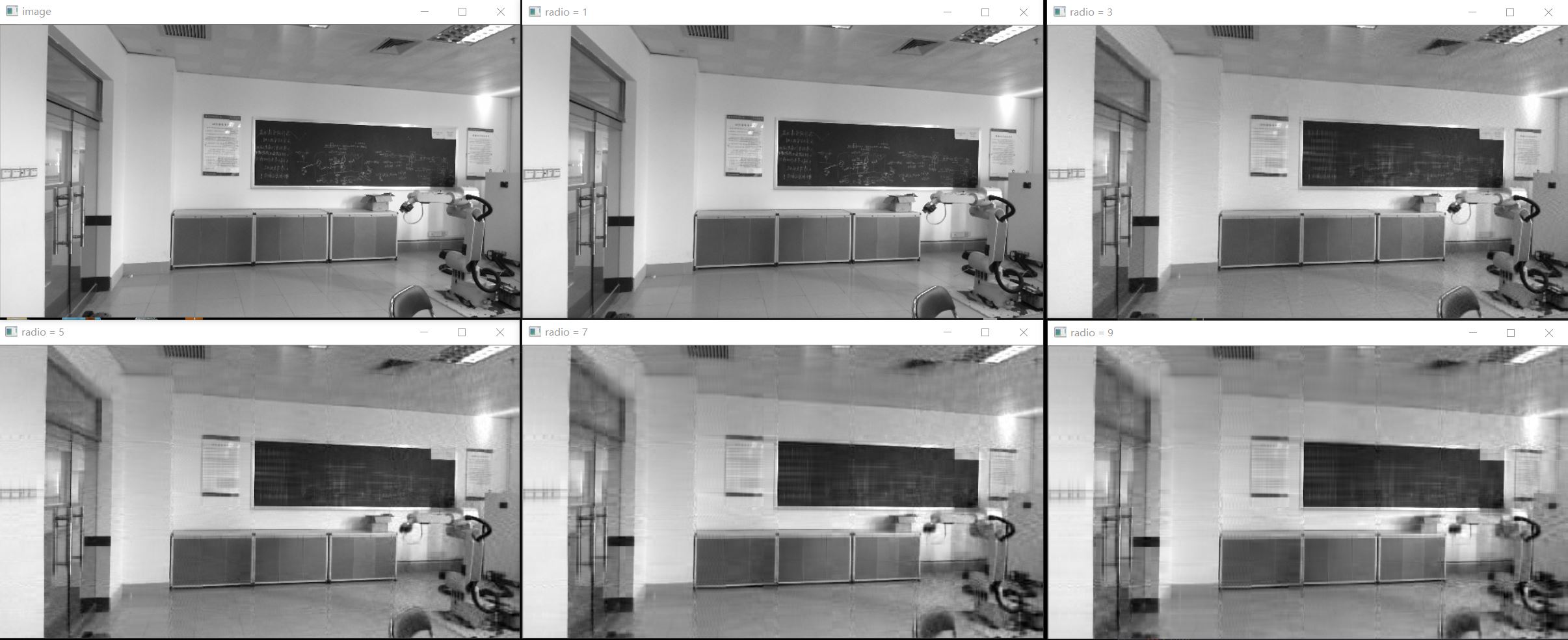
可以看到压缩比率越大,图像失真越明显。

可以看到压缩比率增大,图像体积变小,别小看一张图减小十几kb大小,对于视频网站来讲.......毋庸置疑,开源节流!
楼主不是专门研究图像压缩的,就不深究了,据说微信能将一张由iphone拍的照片(10Mb左右)压缩到几百kb,图像依然很清晰!
三、PCA降维
参考:https://zhuanlan.zhihu.com/p/21580949
给出PCA的一般数学步骤:
顺便给出一道例题:

依据上述步骤,我们来解一道题

投影后如图;
(顺便:如果用 特征值 2/5 对应的特征向量作为矩阵P;

可以看到,如果映射到一维数轴上,是有信息丢失的。你看下图,是主城成分,二维数据映射到一维空间,)

工程上,数据维度太高,其中又有许多冗余成分;这样处理起来效率不高。这时候,我们可以对数据经行降维。
PCA,即:主成成分分析,回想SVD分解图像压缩实例。我们保留最大的几个奇异值,就可以压缩数据的同时,还能最大化减少信息的损失。同理,通过多种线性变换,我们可以将原始数据降维,往往原始数据对应的协方差矩阵的多个奇异值/特征值中,将最大的几个值所对应的特征向量作为线性变换矩阵,可以起到降维作用。如上图,我们便是将最大特征值 2 对应的特征向量 作为矩阵P(P是什么?看上述PCA计算步骤)。你可以看看参考链接,另外为了更好理解PCA,你可以去看看有关PCA的应用,参考:
https://blog.csdn.net/HLBoy_happy/article/details/77146012